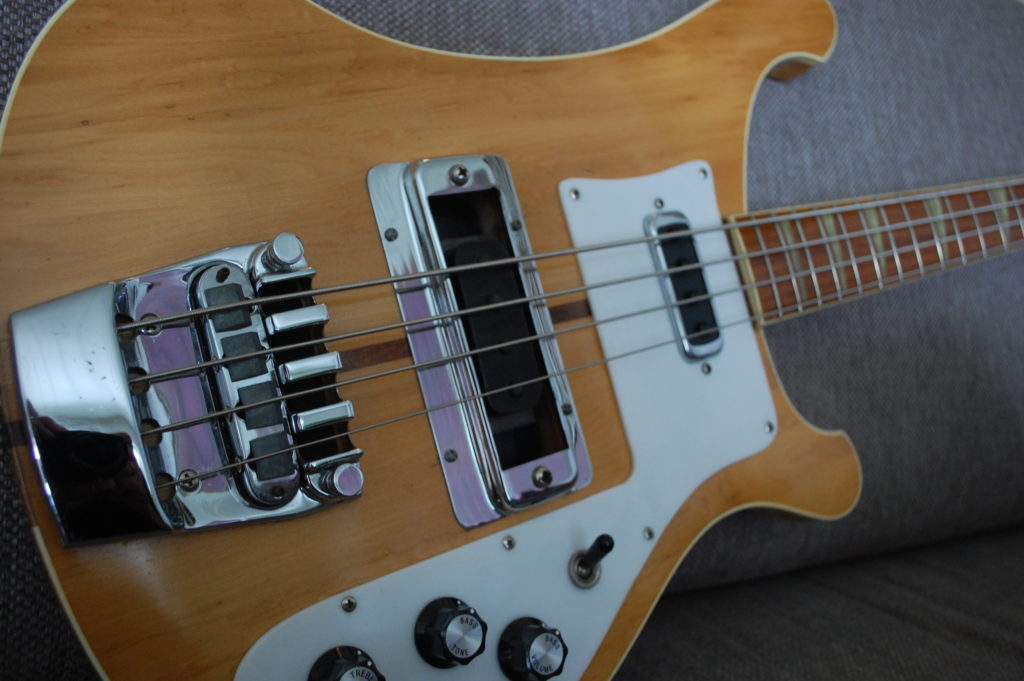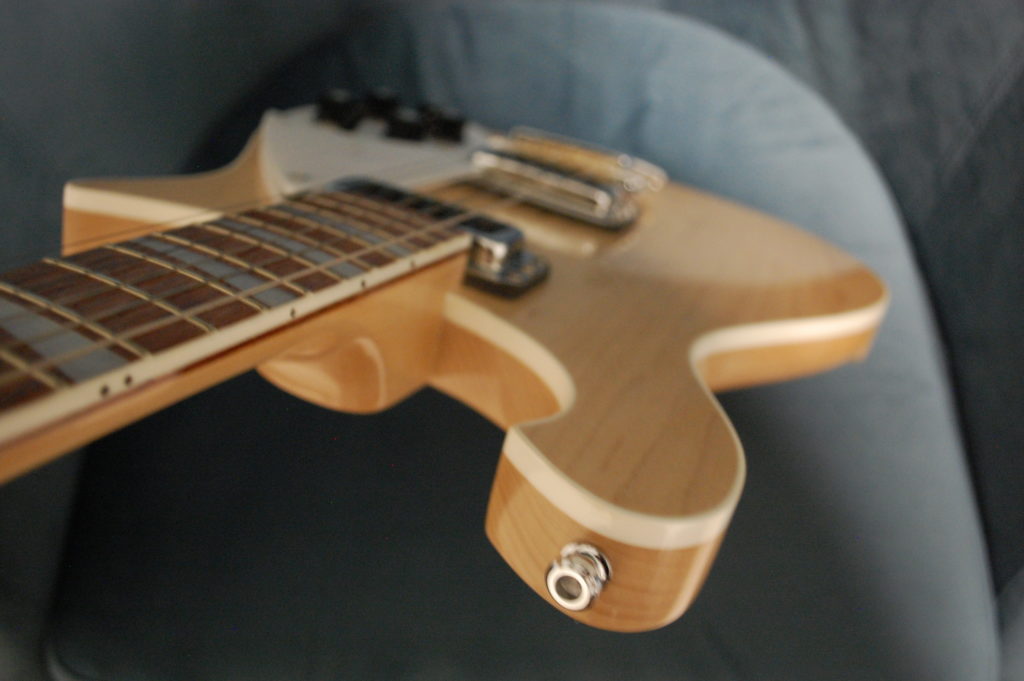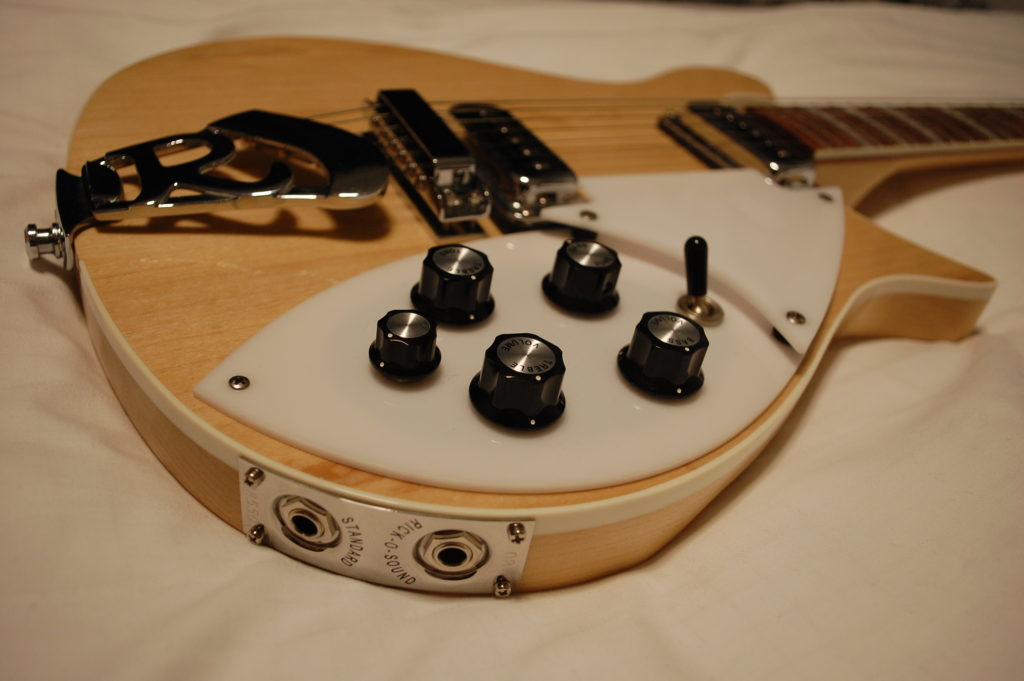
Ageless instruments from the inventor of the electric guitar, according to some sources. There may be other contenders, but Adolph Richenbacher has his Frying Pan solidly displayed in the veritable archives of electric music. The company has now (through some early name changes) been active for ninety years. And, might be the only big company that has kept manufacturing in the US for all its years of existence.
This hasn’t kept Eastern makers from copying, though. A prime example is my Ibanez 2388, acquired in 2008 and resting dismantled for some years before I found a way to straighten the neck which had started to come loose from the body wings. I felt a bit apologetic to the Rickenbacker company for first getting a copy, but hopefully landing the genuine article lets me write the name in full without embarrassment.
The design just adds to the lure of these beauties. The cresting wave of the 4001’s cutaway repeated in the 620’s headstock. The control layout, and the V markers on the glossy fretboards. The way the through-neck build gives access to the exciting end of it.
And the sound… Like nothing I have ever heard, at least from my fingers.
Rickenbacker 4001

Rickenbacker 4001 1977 (2021)
Four-string bass with three-piece through-neck, bound maple body, triangle-inlaid glossy fretboard, two pickups with individual volume and tone placed differently from the G configuration.
The history is one good reason to own a Ric, the Chris Squire connection is another. Paul McCartney, Geddy Lee and Lemmy are prominent users, but to me Chris is the greatest. The 4001 is a big instrument, but Chris wielded it like it was a small handful, producing a bottom line for Yes that was nothing but small. Even above the twelfth fret the thunder hit your chest at numerous Yes show – and I have seen a few.
Which makes it totally natural to select a 4001 from 1977, the first year I saw and heard a live Rickenbacker in the able hands of mr. Squire. Even through a mere pair of Behringer Truth monitors the sound is great. The bass pickup has defined boom, never mushy, and the treble rises to a solid punch while keeping its foundations. Bass playing never was more satisfying. Long may we rumble.

On opening the case: Low at first sight.
Rickenbacker 620

Rickenbacker 620 (2021)
Maple solidbody, through-neck with V markers and lacquered fretboard, two volume and two tone laid out with volumes closest to the rim, blend control.
Inspired by the quality and feel of the 4001, I wanted a six-string to complement it. I liked the Mapleglo finish as well as the glossy V-marked fretboard, and I was not disappointed.
Quality build, fretboard inspires finger dancing, and the single coil sound gives either bite or roundness, or a great combination.

Rickenbacker 330

Rickenbacker 330 (2021)
Semi-solid body routed from the back. Unbound dot 24-fret neck. Two-tier scratchplate with the classic Rick layout: Two single coils, two volume two tone and the mysterious fifth blend control.
I admit it, I have fallen for the Rickys. Good to handle, excellent quality, and the sound is like nothing else. The 330 has a wider fretboard than the 360 (I’m not into over-eager measuring) which makes it perfect for electric fingerpicking, if that is an accepted genre.
Rickenbacker 360

Rickenbacker 360 1985 (2022)
As above: Maple semi-solid, through-neck with V markers and lacquered fretboard, two volume and two tone laid out with volumes closest to the rim, blend control. Main difference to the 330 is (along with the finish) a rounded top and a narrower neck, heading into a fuzzy electricland rather than the brilliancy coming from the squarer sibling. Think R.E.M. as opposed to clear Beatles chords.
Rickenbacker 325
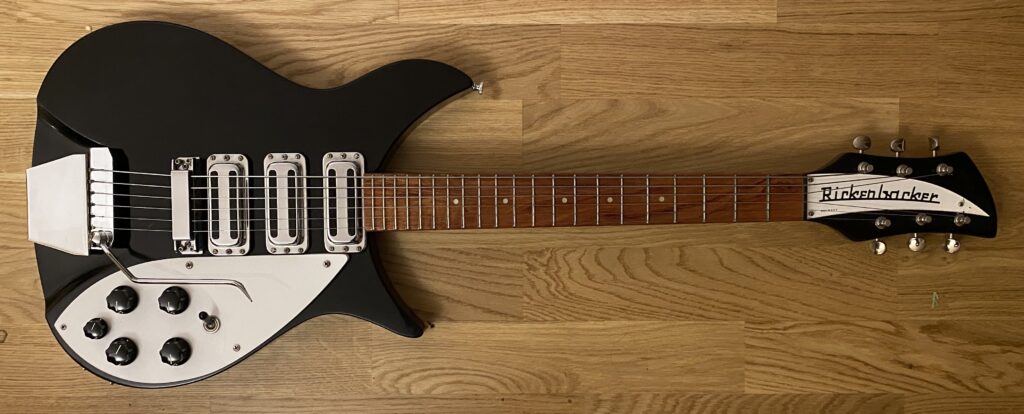
Rickenbacker 325 2000 (2022)
Semi-solid routed from the back; no soundhole makes it look solid. Short 21″ scale, three toaster pickups, Accent vibrato. Standard Rick two-tier scratchplate with five knobs and three way switch.
It seems the up position is neck and middle together, middle position is all three, and down is neck only. I am still testing as the Internet can’t agree on anything. And there is the blend knob, too.
This said with a smile, as the sounds are crystal clear and defined (or rounded if wanted) on all settings, making for playing pleasure with no danger of overstretching fingers. The short scale takes some getting used to as everything is closer together, but that’s why it travelled from Japan to me in the first place.
Dubbed the John Lennon Model, it sits well with its bigger siblings in the crisp and jangly corner of my collection.
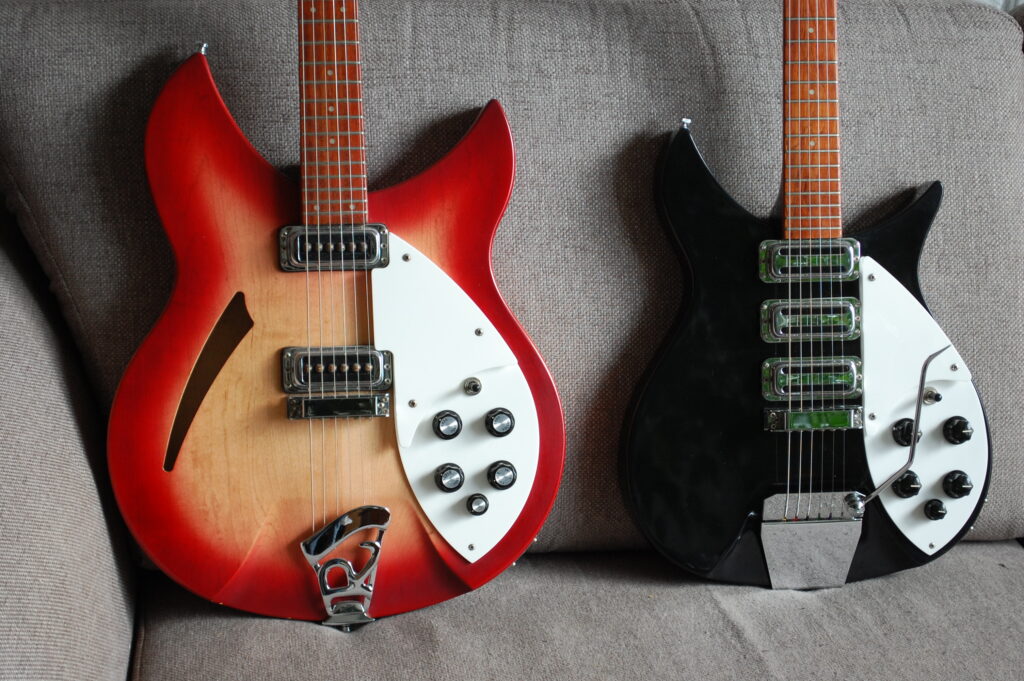
With 330, showing size
Rickenbacker gallery
Tour
From the classics to the eager learners, who seem to have caught the essentials. Tour, step 6.


